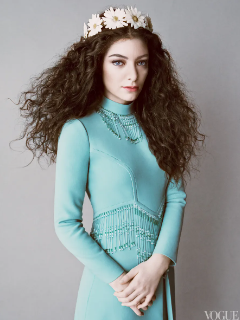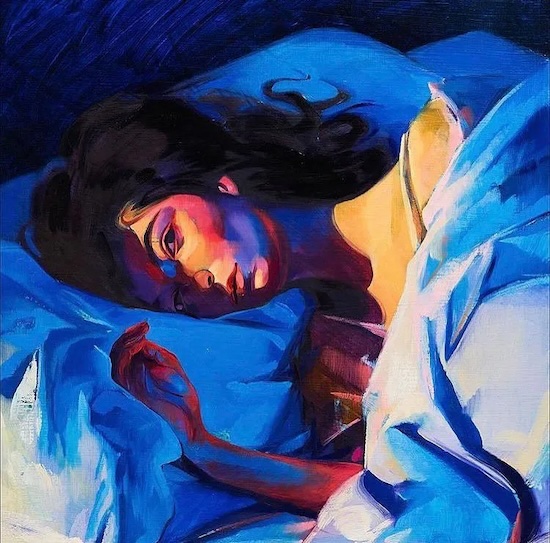
On Nov. 21, 2012, an unknown 16-year-old New Zealand artist, referred to simply as Lorde, self-released her debut EP, The Love Club, for free, reasoning that the audience—mainly people her age—were less likely to have access to a credit card. Within days, the EP garnered acclaim for its unique theme of adolescence and its dark, minimalist pop sound, heard most successfully on “Royals,” the song which launched her career into pop star status.
In an era when pop music was often buried in a maximalist approach to sonic structure with “EDM bass drops, relentless dance beats, and synthetic production,” Lorde’s 2013 debut album, Pure Heroine, was an instant critical and commercial success for its uniquely minimalist, synth-focused sound. It emerged as an antithesis to popular music trends, emphasizing a strong lyrical focus, which is confidently youthful, gently subversive, and plainly self-confident, coupled with slower tempos, simpler melodies, and minimal production elements.
The machine of pop music preys on young artists, whose catalogs are frequently exploited by professional music executives who craft the experience of adolescence in sexually explicit and inauthentic ways to promote their work with a commercial image (frequently to appeal to older audiences). In contrast, Lorde’s early songwriting was starkly authentic and self-assured with themes that were genuine to an expanding culture of youth whose adolescent experience contradicted the capitalist-driven era of pop music.
In her debut album, Lorde explores life as a suburban teenager who doesn’t fit in with the predominant mold of consumerism and aristocracy, but whose fascination with cultural norms forms an almost counter-wave of youth culture. Her unwavering narrative voice, which frequently expresses itself in the communal “we” form throughout the album, allows listeners to feel increasingly connected to this strange counterculture.
“She validated a generation of penniless teenagers living in cities and towns unworthy of postcard status, amid an era of anthems that boasted about being rich and sexy and constantly at the club,” Laura Molloy wrote in an article for dazeddigital.com.
Apart from the thematic essence of the album, its stylistic independence from the landscape of post-2000 pop music—which harped on electronic-dance tropes, heavy synthetic drums, and maximalist production—was hugely influential in the growing popularity of alternative pop music, as Lorde created a transition point from “bubblegum” pop to a darker sonic and lyrical focus.
“Royals” presents a stripped-down composition and dry vocals that reversed the maximalist production and grandiose pop style to emphasize narrative-structure under sparse sonic construction. Lorde’s popularity sparked a growing desire for strong youth authenticity.
“Labels were wanking over trying to get loads of girls who were like [Lorde],” described an unnamed source in a Guardian interview.
Lorde’s vocals in “Royals” were part of a trend that formed the spine to “whisperpop,” along with the influence of the incomparable Lana Del Rey.

“Along the way, Lorde became an industry blueprint for a sort of world-building, precocious wallflower singer-songwriter, helping to usher in a generation including Halsey, Billie Eilish and Olivia Rodrigo,” Joe Coscarelli argued in a New York Times piece.
Aside from the growing popularity of young female artists, pop singers also began to modify their style to match the growing trends of post-bubblegum pop genre experimentation. Songs like “Habits (Stay High)” by Tove Lo, “YOUTH” by Troye Sivan, “ocean eyes” by Billie Eilish, and “drivers license” by Olivia Rodrigo all modified Lorde’s form of darker, more personal lyrics with simplistic pop melodies (often over minor chords) to provide an intimate, lyrical experience. Sonic structure felt secondary to the narrative form.
Indie innovation quickly bled over into the mainstream. It’s prominent, for instance, in Taylor Swift’s Reputation, where her aggregation of minimal electronic production, narrative-style lyrics, and simple melodic structure all reflect the genre exploration of Pure Heroine.
“[Reputation] marks the first time Taylor Swift feels palpably late to the party,” Craig Jenkins wrote in Vulture. “Like everyone else, she’s trying to match what’s on the market rather than distinguishing herself from it.”
Pure Heroine altered the pop scene that became “almost unrecognizable from the sugary-sweet, overtly sexual realm of the early aughts.” Lorde’s sophomore album, Melodrama, was just as influential as its predecessor, if not more so. While Pure Heroine celebrates a minimalist production, subdued sonic structure, and a communal “we” that encapsulates young adulthood, Melodrama explores more maximalist production with layered samples, loud synths, and intense electronic drum beats that depart from the former.
The influence of her sophomore album can be heard throughout the wide landscape of popular music, most significantly in the popularized genre of “sad-dance pop” that Melodrama rapidly accelerated. Gracie Abrams’s synth-pop production on “Close to You” sounds as if it could be taken from “Hard Feelings/Loveless,” “Pink Pony Club” by Chappell Roan follows the explosive chorus structure of “Green Light,” and “I Can Do It With a Broken Heart” by Taylor Swift sounds almost identical to the backdrop of “Supercut.” In Troye Sivan’s Something To Give Each Other and brat by Charli xcx, the influence of Lorde’s sad-dance aesthetic is palpable with melancholic, self-deprecating lyrics over a loud synth and heavy drum elements.
Although the album’s influence is perhaps more significant because of its producer Jack Antonoff, who collaborates a myriad of pop stars like Lana Del Rey and Taylor Swift (critics have pointed out how similar the Taylor Swift’s synth-pop album Midnights is to Lorde’s sophomore work), Lorde’s masterful pop impulses and powerful sonic command continue to influence the landscape of popular music. While Pure Heroine and Melodrama largely differ in their approach to production and lyrical themes, both albums have garnered unprecedented stylistic influence. In the decade that Lorde has been on the scene, she has influenced a large array of singers such as Olivia Rodrigo, Troye Sivan, Billie Eilish, Conan Gray, Gracie Abrams, and Maggie Rogers. Her influential narrative and melodic form has pervaded the sounds and styles of pop music in her single-decade career, and her musical aesthetics continue to influence the zeitgeist of popular culture.
Carter Appleyard can be reached at cappleyard@wesleyan.edu.



Leave a Reply